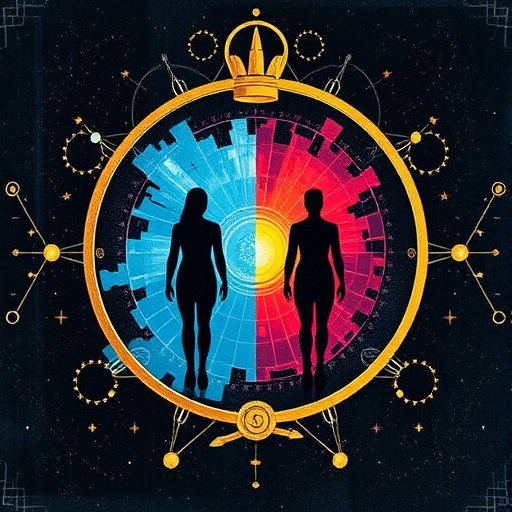The concept of gender has evolved significantly over the years, transforming from a binary understanding rooted solely in biological distinction to a multidimensional framework that encompasses a spectrum of identities and expressions. In the upcoming 2025 article, “What Are the Boundaries for Defining Gender?” by B.M. King, the intricacies of this evolution will be dissected, highlighting the ongoing discourse within academia and society. For decades, traditional definitions had confined gender to male and female categories, but researchers and activists have pushed for a broader, more inclusive understanding that reflects diverse experiences.
King meticulously examines various academic and cultural perspectives on gender, illustrating that the journey to comprehend gender is not without complexities. The article posits that gender should not be seen as a static label but rather as a dynamic identity that can be influenced by societal structures, personal experiences, and cultural contexts. In this light, it becomes clear that the quest for a universal definition of gender is complicated by intersecting factors such as race, age, and socioeconomic status.
Furthermore, the article addresses the implications of rigid gender definitions on mental health and well-being. It discusses how individuals who do not conform to traditional gender norms often face marginalization, discrimination, and psychological distress. King brings to light the vital importance of creating spaces that acknowledge and honor the full spectrum of gender identities, arguing that societal acceptance is crucial for the mental health and self-acceptance of individuals across the gender spectrum.
Another key area of focus is the role of language in shaping our understanding of gender. The article emphasizes how linguistic structures and societal norms contribute to constructing and reinforcing gender identities. King draws attention to the rise of gender-neutral pronouns and the importance of language in fostering inclusivity. By challenging conventional language norms, the article suggests that society can take significant steps toward breaking down barriers and promoting acceptance of diverse gender identities.
The biological versus social construction debate is also explored in depth. King provides a balanced perspective, acknowledging that while biological factors do play a role in sex differentiation, they do not singularly define gender. The article emphasizes that gender identity is largely influenced by socialization and cultural experiences, which vary widely across different societies. This divergence reveals that any attempt to define gender on a purely biological basis is inherently flawed.
As we peel back the layers of complexity surrounding gender discussions, King’s analysis confronts the pitfalls of oversimplifying gender. The article makes a compelling case for moving beyond dichotomous thinking to embrace a more nuanced approach. This shift is not merely an academic exercise; it has real-world implications, influencing policy, education, healthcare, and social relations. The demand for a broader understanding of gender exceeds academic circles and seeps into advocacy, public policy, and personal interactions.
King also dives into the political dimensions of gender identity, exploring how policy decisions can impact the rights and recognition of marginalized gender identities. Current legislative battles over transgender rights, for instance, showcase the urgent need for legal frameworks that affirm and protect diverse gender expressions. The article calls for a commitment to crafting public policies that reflect the complexities of gender identity, ensuring that all individuals can navigate society without fear of discrimination or violence.
Moreover, the article sheds light on the vital role of education in fostering understanding and acceptance of various gender identities. King’s exploration of educational initiatives illustrates how inclusive curriculums can promote awareness and empathy among students. By educating younger generations about the spectrum of gender identities, society can cultivate a more informed and compassionate populace, paving the way for future progress in gender equity.
The significance of art and media in shaping perceptions of gender is also highlighted. King points out that representation matters; the portrayal of diverse gender identities in popular culture can challenge stereotypes and foster acceptance. As media continues to influence public perception, the article underscores the responsibility of creators to represent authentic stories that reflect the complexities of gender experiences.
King’s article does not shy away from the challenges faced by individuals navigating their gender identity in a predominantly binary world. It acknowledges the emotional toll that societal rejection and misunderstanding can impose. Personal accounts and narratives are interwoven throughout, bringing this discussion to life and connecting theory with lived experiences. These narratives serve as powerful reminders of the resilience and courage exhibited by those who challenge societal notions of gender.
In conclusion, “What Are the Boundaries for Defining Gender?” is poised to make a significant contribution to the ongoing discourse surrounding gender identity and expression. King’s insightful analysis encourages readers to not only reevaluate their understanding of gender but also to actively participate in creating a more inclusive and equitable society. As discussions around gender continue to evolve, the necessity for awareness, empathy, and action remains paramount. This groundbreaking article serves as both a resource and a call to action for individuals across the globe to engage thoughtfully with the complexities that define our shared humanity.
The article is set to spark discussions and foster awareness, paving the way for continued exploration of what gender means in contemporary society.
Subject of Research: Gender Identity and Definitions
Article Title: What Are the Boundaries for Defining Gender?
Article References:
King, B.M. What Are the Boundaries for Defining Gender?.
Arch Sex Behav (2025). https://doi.org/10.1007/s10508-025-03309-w
Image Credits: AI Generated
DOI: https://doi.org/10.1007/s10508-025-03309-w
Keywords: Gender Identity, Spectrum, Inclusivity, Cultural Perspectives, Linguistic Constructs, Mental Health, Public Policy, Education, Representation, Social Dynamics.




